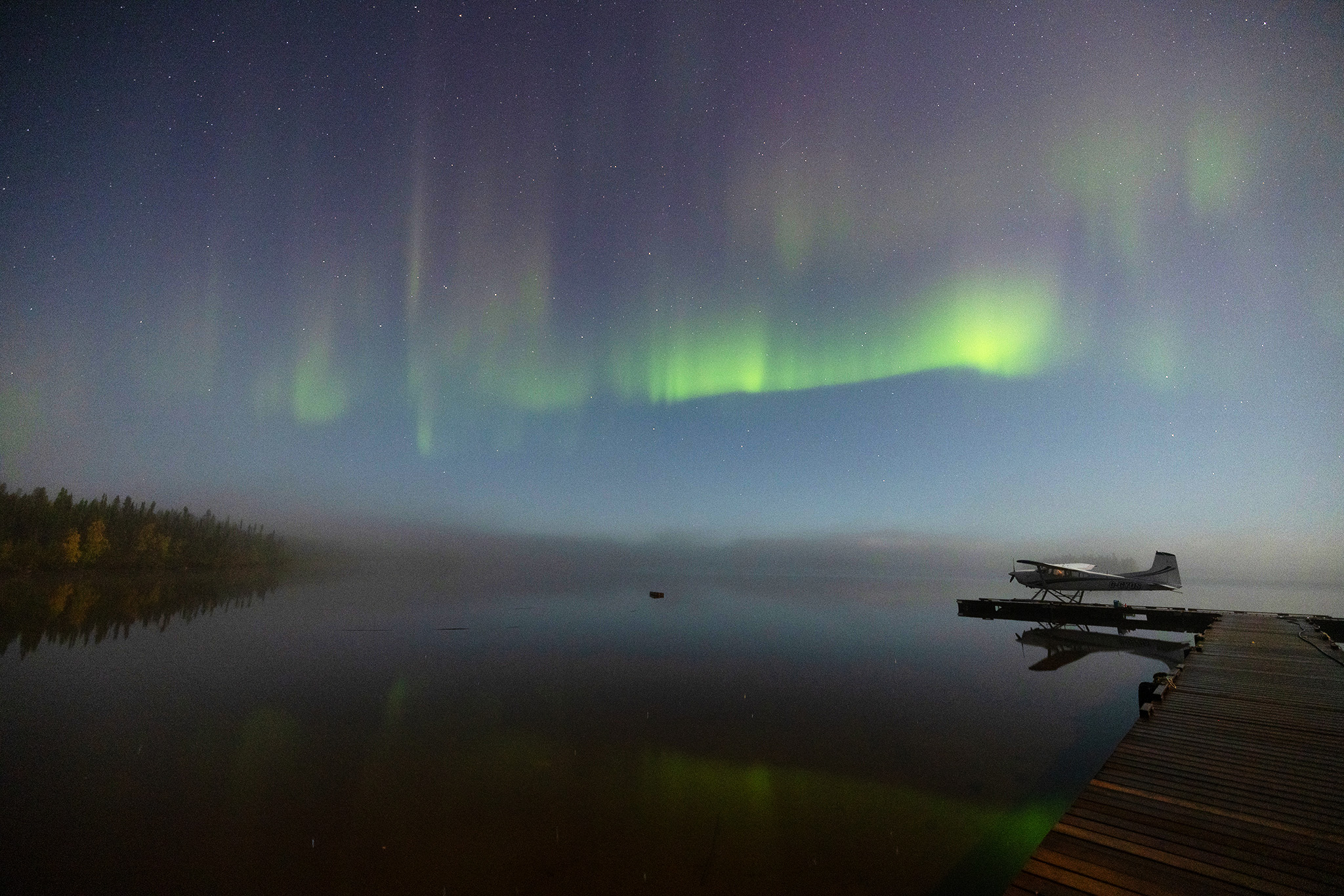
I recently spent a week In our neighbor to the north, specifically the Canadian province of Manitoba. We had booked a trip with friends to a remote lodge nearly a year prior, and we were finally there! The travel brochures promised spectacular scenery and wildlife, interesting geology, world class fishing, and northern lights. I wasn’t all that interested in fishing, but I’m always interested in the other items on that list. (And the fishing turned out to be a highlight!)
In particular, I thought this would be a perfect opportunity to use my new “Milky Way and aurora lens”. I knew the Milky Way would not really be a candidate subject—the moon would be full and wash the sky of that faint feature. But a full moon illuminates the landscape, providing a dramatic foreground for northern lights! And at nearly 60-degrees north, we would be dead center in the auroral oval that develops each night at this latitude. The only thing to worry about were clouds (as usual with any astrophotography).
I packed my gear, carefully selecting only the items essential to wildlife and aurora photography: my “safari” (telephoto) lens and my new wide-angle (“Milky Way”) lens, because there was a weight limit. The lodge was remote, inaccessible by road. The only way in was by small plane, landing on a gravel airstrip, where every item of luggage, and sometimes passengers, were weighed carefully. Our destination was beyond the range of the plane, so a mid-trip landing at the northernmost point of civilization was needed to refuel. And rebalance the load: some of the passengers were reassigned seats to stabilize the aircraft!
We arrived on a sunny Sunday morning, but as expected, the weather was a wild card. The excursions planned for the day were revised due to excessive wind (too high to safely travel by boat). The same was true for the following day. Clouds and rain intervened, but then, remarkably, the sky cleared, the wind died, and we had two beautiful calm nights, perfect for photographing aurora.
Unfortunately, the aurora never showed up. In what must have been truly anomalous solar activity, the aurora levels were at record lows. Some faint lights could be seen at some hours of the night, but the rivers of light crossing from horizon to horizon that I was hoping for, never presented themselves.
But this is a common experience for those of us in this hobby. We position ourselves at the right place and the right time for a celestial event, and then are at the mercy of the weather as to whether we will actually witness it. In this case the terrestrial weather cooperated, but “space weather”, did not.
Despite the aurora-empty periods of calm reflecting waters, the beauty of the night sky in a remote location is still magical. And the camera sees faint lights better than we do. I was able to assemble this sequence of exposures, including some from my friend Eric Persson, into this timelapse. Click the full-screen icon for the best view; it’s only three minutes.


Gorgeous!
Hi Thor,
I was trying to leave a comment and they said the password to my wordpress site was in a data leak – but when I tried to change it – it looked like it was changing your password to thorolson – so I just closed everything. If you get warnings from wordpress – it was just me!
The video is gorgeous.
Sorry, Mindy
>
Pingback: Franconia Aurora | Thor's Life-Notes